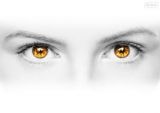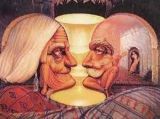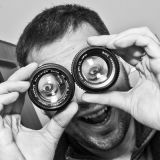- Forum
- Photography and Camera Forum
- Taking the Photo | Editing | The art of Photography!
- Editing and Presentation
- How do you make a HDR image from one photo?
How do you make a HDR image from one photo?
-

- Happy-pixel
- Photography Hooked
-
- Nikon D700
- Followers: 113
- Posts: 551
-
Points:
2630
Post #35596
-

- Scotty
- Agent 007
- James Bond, PT mod.
- Followers: 1088
- Posts: 9872
-
Points:
14759
Post #35692
Layer blending involves editing multiple images of the same image, based on raw information.
How you do it is by importing smart objects.
When you open a Raw from Adobe Bridge, you will get the raw editor, before going into full blown photoshop.
I believe it's Command on mac, and probably Control on PC. Hold one of those down depending on your computer, and hover over the "open" button the right corner, it should say "open smart object."
What smart objects do is enable you to open RAWs and have them interact in photoshop like a layer. You can have 2 of the same image open and in the layer menu, you'll have a little black and white box on the layer you can double click, and edit that raw itself anytime you want with full raw editing tools.
What does this really mean?
It means you can extend your dynamic range more than any other program in existance, and do make it look uncanny.
Topaz, Lucis, photomatix, photoshops HDR plugin, and all of the other software is absolute GARBAGE compared to this.
Try this.
Make to smart objects of the same picture, have them as 2 layers in photoshop.
Edit the first and bring up the exposure A LOT.
edit the 2nd to underexpose it, like you were trying to bring in a sky.
Order the layers correctly (top shows the most), Paint with White i believe on that layer, and the underexposed sky comes through on top of the blown out sky. You're using raw information to it's max, now you mix this with blending methods, opacities, and the power of photoshop...you now do what art wolfe, scott kelby, peter lik and the greatest photographers do to their landscapes.
They do not use filters, they hand craff their shots, like ansel adams did.
I may have had some errors in the process, because I haven't done this to landscape to a month or so, but you'll get the point.
When the last candle has been blown out
and the last glass of champagne has been drunk
All that you are left with are the memories and the images-David Cooke.
-

- effron
- Newbie
- Followers: 1623
-
Points:
129640
Post #35934
Scotty wrote: Luminosity masks, or layer blending.
Layer blending involves editing multiple images of the same image, based on raw information.
How you do it is by importing smart objects.
When you open a Raw from Adobe Bridge, you will get the raw editor, before going into full blown photoshop.
I believe it's Command on mac, and probably Control on PC. Hold one of those down depending on your computer, and hover over the "open" button the right corner, it should say "open smart object."
What smart objects do is enable you to open RAWs and have them interact in photoshop like a layer. You can have 2 of the same image open and in the layer menu, you'll have a little black and white box on the layer you can double click, and edit that raw itself anytime you want with full raw editing tools.
What does this really mean?
It means you can extend your dynamic range more than any other program in existance, and do make it look uncanny.
Topaz, Lucis, photomatix, photoshops HDR plugin, and all of the other software is absolute GARBAGE compared to this.
Try this.
Make to smart objects of the same picture, have them as 2 layers in photoshop.
Edit the first and bring up the exposure A LOT.
edit the 2nd to underexpose it, like you were trying to bring in a sky.
Order the layers correctly (top shows the most), Paint with White i believe on that layer, and the underexposed sky comes through on top of the blown out sky. You're using raw information to it's max, now you mix this with blending methods, opacities, and the power of photoshop...you now do what art wolfe, scott kelby, peter lik and the greatest photographers do to their landscapes.
They do not use filters, they hand craff their shots, like ansel adams did.
I may have had some errors in the process, because I haven't done this to landscape to a month or so, but you'll get the point.
Exactly what I was gonna say.......
Why so serious?
-

- Scotty
- Agent 007
- James Bond, PT mod.
- Followers: 1088
- Posts: 9872
-
Points:
14759
Post #35980
effron wrote:
Scotty wrote: Luminosity masks, or layer blending.
Layer blending involves editing multiple images of the same image, based on raw information.
How you do it is by importing smart objects.
When you open a Raw from Adobe Bridge, you will get the raw editor, before going into full blown photoshop.
I believe it's Command on mac, and probably Control on PC. Hold one of those down depending on your computer, and hover over the "open" button the right corner, it should say "open smart object."
What smart objects do is enable you to open RAWs and have them interact in photoshop like a layer. You can have 2 of the same image open and in the layer menu, you'll have a little black and white box on the layer you can double click, and edit that raw itself anytime you want with full raw editing tools.
What does this really mean?
It means you can extend your dynamic range more than any other program in existance, and do make it look uncanny.
Topaz, Lucis, photomatix, photoshops HDR plugin, and all of the other software is absolute GARBAGE compared to this.
Try this.
Make to smart objects of the same picture, have them as 2 layers in photoshop.
Edit the first and bring up the exposure A LOT.
edit the 2nd to underexpose it, like you were trying to bring in a sky.
Order the layers correctly (top shows the most), Paint with White i believe on that layer, and the underexposed sky comes through on top of the blown out sky. You're using raw information to it's max, now you mix this with blending methods, opacities, and the power of photoshop...you now do what art wolfe, scott kelby, peter lik and the greatest photographers do to their landscapes.
They do not use filters, they hand craff their shots, like ansel adams did.
I may have had some errors in the process, because I haven't done this to landscape to a month or so, but you'll get the point.
Exactly what I was gonna say.......
When the last candle has been blown out
and the last glass of champagne has been drunk
All that you are left with are the memories and the images-David Cooke.
-

- Conner
- The Lounger
-
- 5D Mark II
- Followers: 196
- Posts: 1050
-
Points:
6941
Post #36062
Scotty wrote: Luminosity masks, or layer blending.
Layer blending involves editing multiple images of the same image, based on raw information.
How you do it is by importing smart objects.
When you open a Raw from Adobe Bridge, you will get the raw editor, before going into full blown photoshop.
I believe it's Command on mac, and probably Control on PC. Hold one of those down depending on your computer, and hover over the "open" button the right corner, it should say "open smart object."
What smart objects do is enable you to open RAWs and have them interact in photoshop like a layer. You can have 2 of the same image open and in the layer menu, you'll have a little black and white box on the layer you can double click, and edit that raw itself anytime you want with full raw editing tools.
What does this really mean?
It means you can extend your dynamic range more than any other program in existance, and do make it look uncanny.
Topaz, Lucis, photomatix, photoshops HDR plugin, and all of the other software is absolute GARBAGE compared to this.
Try this.
Make to smart objects of the same picture, have them as 2 layers in photoshop.
Edit the first and bring up the exposure A LOT.
edit the 2nd to underexpose it, like you were trying to bring in a sky.
Order the layers correctly (top shows the most), Paint with White i believe on that layer, and the underexposed sky comes through on top of the blown out sky. You're using raw information to it's max, now you mix this with blending methods, opacities, and the power of photoshop...you now do what art wolfe, scott kelby, peter lik and the greatest photographers do to their landscapes.
They do not use filters, they hand craff their shots, like ansel adams did.
I may have had some errors in the process, because I haven't done this to landscape to a month or so, but you'll get the point.
Any photos to share with that great post?
-

- cah87
- New Kid On The Block
-
- Canon Mark II
- Followers: 6
- Posts: 38
-
Points:
0
-

- Yasko
- Photography Hooked
-
- Canon 5D, Canon 30D, Olympus tough P&S
- Followers: 47
- Posts: 805
-
Points:
30
-

- Scotty
- Agent 007
- James Bond, PT mod.
- Followers: 1088
- Posts: 9872
-
Points:
14759
Post #36400
Yasko wrote: Good explanation Scotty, my thoughts exactly.
How do you process a single shot to HDR? You don't. It's impossible to boost it, a single shot has the dynamic range of...a single shot.
A single shot's RAW has a lot of dynamic range.
When the last candle has been blown out
and the last glass of champagne has been drunk
All that you are left with are the memories and the images-David Cooke.
-

- Stealthy Ninja
- Moderator
-
- Fuji X stuff and a 1DsIII for some reason
- Followers: 982
- Posts: 16300
-
Points:
6837
Post #36401
-

- Yasko
- Photography Hooked
-
- Canon 5D, Canon 30D, Olympus tough P&S
- Followers: 47
- Posts: 805
-
Points:
30
-

- Scotty
- Agent 007
- James Bond, PT mod.
- Followers: 1088
- Posts: 9872
-
Points:
14759
Post #37254
Number 7 wrote: Do any of those canned softwares work good?
If you want pro results, no.
When the last candle has been blown out
and the last glass of champagne has been drunk
All that you are left with are the memories and the images-David Cooke.
-

- Yasko
- Photography Hooked
-
- Canon 5D, Canon 30D, Olympus tough P&S
- Followers: 47
- Posts: 805
-
Points:
30
Post #37264
Scotty wrote:
Number 7 wrote: Do any of those canned softwares work good?
If you want pro results, no.
I've extensively experimented with Photomatix, Artizen, and a couple others, and I have to agree with that. The results are quick, and satisfactory for some, but nothing beats traditional Photoshop processing techniques. The steep learning curve is well worth it in the end.
- Forum
- Photography and Camera Forum
- Taking the Photo | Editing | The art of Photography!
- Editing and Presentation
- How do you make a HDR image from one photo?
Latest Reviews
The Canon EOS R100 is an entry-level mirrorless camera introduced in 2023. But just because it’s an entry-level camera doesn’t mean it’s a bare-bones camera. Find out why in this review!
Nikon’s retro-looking Nikon Zfc is anything but retro. Under its classic body is a host of features and amenities that make it a worthwhile compact mirrorless camera for 2024.
The Canon EOS R50 is one of the newest R-system cameras from Canon. Is it worth your money? Find out all the details you need to know in this comprehensive review.
The Sony FE 70-200mm f/2.8 GM OSS II is Sony’s flagship mirrorless zoom lens. As such, it’s loaded with features and has a top-shelf build quality that makes it a top pick!
Forum Top Posters
-
1alexcray 1 post
-
2Fitch 1 post
-
3Sean Lamber 1 post
-
4Ira Weber 1 post
-
5Cory J 1 post
Latest Articles
Using leading lines in photography helps improve the composition by drawing viewers in and leading their eye from the foreground to the background. Explore some fine examples of this in this guide!
The Insta360 has one of the best lineups of action cams and 360-degree cameras. With these Insta360 accessories, you can elevate your photography and videography game!
Creating impactful photos of landscapes depends on many factors, not the least of which is your talent behind the lens. This guide explores other elements required for the best product.
The Canon EOS R100 is an entry-level mirrorless camera introduced in 2023. But just because it’s an entry-level camera doesn’t mean it’s a bare-bones camera. Find out why in this review!
Are you ready to upgrade your camera? Before buying new, you might consider the value of purchasing used gear to save money.
The Olympus OM-D E-M10 Mark IV is a micro four thirds camera released in 2020. It’s an entry-level system along with the OM-D E-M5 Mark III. Use this guide to determine which one is best for you!
Blue hour photography might not be as well known as golden hour photography, but it is every bit as good a time to create epic images of landscapes. Learn how in this quick tutorial!
Nikon’s retro-looking Nikon Zfc is anything but retro. Under its classic body is a host of features and amenities that make it a worthwhile compact mirrorless camera for 2024.
















